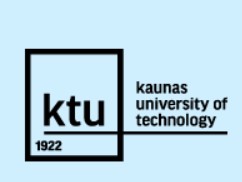Impact of Intellectual Capital Efficiency on Growth Rate and Profitability of a Company: Nasdaq Baltic Case
Impact of Intellectual Capital Efficiency on Growth Rate and Profitability of a Company: Nasdaq Baltic Case
Author(s): Nellija Titova, Biruta SlokaSubject(s): Business Economy / Management, Economic development
Published by: Exeley Inc.
Keywords: Intellectual capital; extended impact models;
Summary/Abstract: Research on intellectual capital (IC), while realizing the fact the investments or spending on IC that can either create or destroy value, during the last decade has changed the focus from analysis of companies IC meta system to analysis of ecosystem and company as part of framework. Intellectual capital (IC) analysis that as an academic discipline has evolved and exceled since early 90’s has reached the fourth stage of the research. Purpose of the study: Investigate the level of relationship between intellectual capital and its components and sales / growth rate and profitability of the companies; identifies dominating significant constituents in NASDAQ Baltic companies. Tasks: a) to identify intellectual capital and business performance ratios for the analysis, b) choose normalisations proxies, set number of control and moderate variables and period of impact to evaluate. Primary research methods: panel time-series sample of 92 companies and a 6-year observation of companies listed on the Baltic Stock Exchange between 2013 and 2019. This article contributes to the development of Intellectual Capital Theory, Value-Based Management Theory and Resource-View Theory. Elaborating on the analysis of the financial statements, as audited and public data, thorough analysis of the companies’ intellectual capital and its components has been undertaken improving the methodology of the evaluation of the impact, identifying research gaps and expanding the theoretical impact models. This study reveals a significant and positive relationship between Intellectual Capital and its components and sales / growth rate and profitability of the companies; identifies dominating significant constituents in NASDAQ Baltic companies. Expanding number of IC components, number of control and moderate variables and, crucially, testing for approbation of normalization proxies and adjusting IC components for value added or assets, provides thorough and accurate analysis of the impact.
Journal: European Integration Studies
- Issue Year: 16/2022
- Issue No: 1
- Page Range: 150-165
- Page Count: 16
- Language: English

